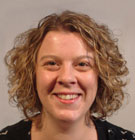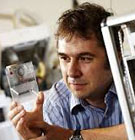Researchers from York’s Wolfson Atmospheric Chemistry Laboratories found that tobacco-related carcinogens can be brought into non-smoking households on clothing or in airborne smoke from outside the house.
Dust particles
Scientists examined dust particles from the homes of smokers and non-smokers. They found tobacco-related carcinogens exceeded recommended limits for children aged one to six in three quarters of smokers’ homes – and two thirds of non-smokers’ homes.
Until now, the risks of exposure to ‘third hand’ tobacco smoke have been uncertain.
Lead investigator Dr Jacqueline Hamilton said: “The risks of tobacco exposure do not end when a cigarette is extinguished. Non-smokers, especially children, are also at risk through contact with surfaces and dust contaminated with residual smoke gases and particles, so-called third hand smoke.
“This risk should not be overlooked and its impact should be included in future education programmes and tobacco-related public health policies.”
Each year, 600,000 people die worldwide through passive inhalation of environmental tobacco smoke, also known as 'second hand' smoke. As numerous countries have introduced smoking bans in public places, the home has become the main source of passive smoking exposure.
Carcinogenic materials
Professor Alastair Lewis, from York’s Wolfson Atmospheric Chemistry Laboratories and the National Centre for Atmospheric Science, said: “Over 40 per cent of children have at least one smoking parent and whereas there is a general public awareness about the harms of second hand smoke, there is little knowledge about the dangers of third hand smoke. Carcinogenic materials can be passed from smokers to non-smokers during shared contact, for example between clothes and surfaces and also enter homes via airborne transport of cigarette smoke.”
Research was also carried out at the National Centre for Atmospheric Science and the Chromatography and Environmental Applications research group at the Universitat Rovira I Virgili in Spain. The study, which was published in the journal Environment International, was supported by the UK Natural Environment Research Council (NERC) and the General Research Directorate of the Government of Catalonia.
The text of this article is licensed under a Creative Commons Licence. You're free to republish it, as long as you link back to this page and credit us.






